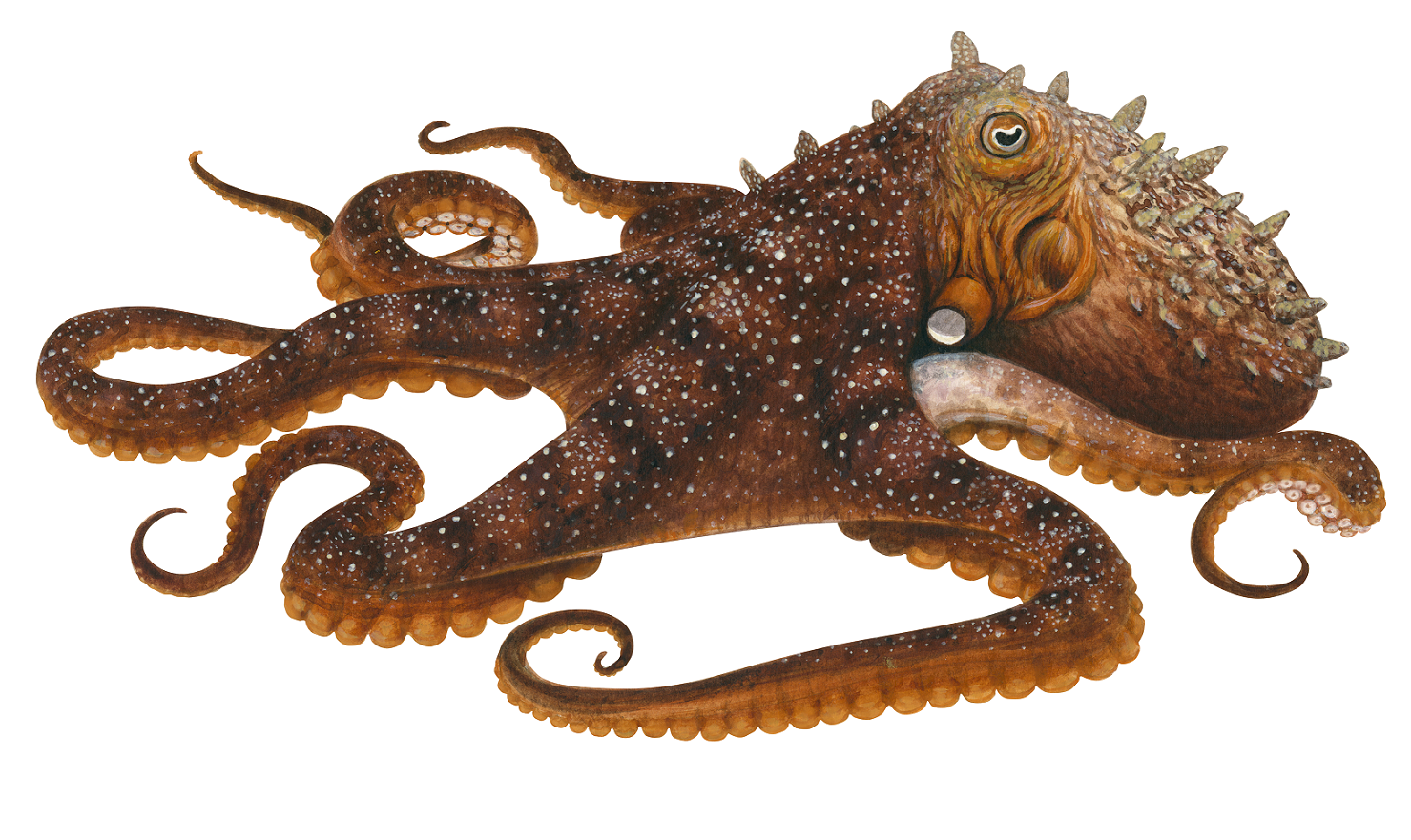Māori Octopus
Macroctopus maorum (Māori Octopus)

2023/24 Māori Octopus Status
| Stock Status | Sustainable |
| Summary | Total reported catches of Māori Octopus remained low in 2023/24. The reproductive biology of this species suggests it may be at moderate risk of recruitment impairment in Tasmania. The rock lobster fishery is responsible for most fishing mortality of Māori Octopus in state waters, however quantities killed and discarded by this fishery are unknown. When catch data and trip limits for octopus are compared with total number of rock lobster trips per year, it appears that overall catch and, hence, discard mortality may be low. |
| Stock | Tasmanian Māori Octopus |
| Indicator(s) | Catch; risk assessment of recruitment impairment |
Background
Māori Octopus in Tasmania is a by-product species landed in small quantities by the Southern Rock Lobster fishery, the Tasmanian Octopus Fishery and developmental Pale Octopus fishery, and the Tasmanian Scalefish fishery. It is also a target species of the very small Eaglehawk Bay octopus fishery. The Southern Rock Lobster fishery generally lands the highest catch of Māori Octopus. The formerly productive Eaglehawk Bay fishery targeting Māori Octopus has not been fully operational since the ban on gillnets in 2009, however small catches are sometimes still reported. Southern Rock Lobster and Scalefish fishing licences have a trip limit of 100 kg of retained octopus.
A pdf of the complete 2023-2024 Tasmanian Octopus Assessment is available here:
Learn more about what each stock status classification means on our Stock Status Classifications Information Page:




Social and Economic Indicators